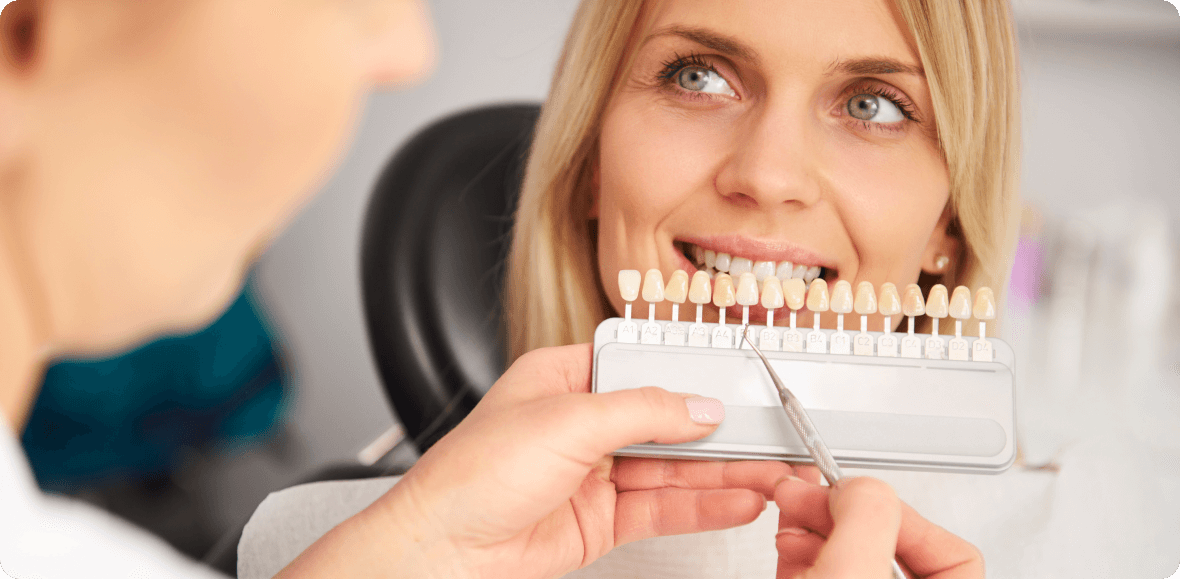Crowns Overview
If you have missing or cracked teeth, you are probably not happy with your smile. We are here to help you feel better about your mouth so you enjoy showing it off.
One way we can do this is by offering crowns to our patients. A crown covers up a bad tooth so you have a natural-looking tooth that fits right into your mouth.

Crowns are also used to keep a filling in place when there is not much tooth left. They can also strengthen your regular teeth by giving them extra protection. If you have discolored teeth or teeth that are misshapen, a crown will help you have a smile of which you can be proud.
Crowns are attached right to your teeth so you will be able to do everything you can do with normal teeth. You can eat all of the foods you enjoy, no matter how hard it is to bite.
What are the Benefits of Getting a Crown?
Dental crowns offer a number of cosmetic benefits and have the ability to:
- Protect teeth compromised by fracture
- Restore severely eroded or cracked teeth
- Support a dental bridge
- Shield a tooth with a large filling
- House a dental implant
- Cover improperly shaped or discolored teeth
What Materials are Used in Crowns?
Crowns are broken up into 2 categories: permanent and temporary. Temporary crowns serve as placeholders while permanent crowns are in production and are generally made from stainless steel or acrylics. Permanent crowns are firmly cemented to teeth and are made from a variety of materials, including:
- Metals with a high percentage of gold or platinum
- Porcelain
- Porcelain fused to metal
- Stainless steel
- Resin
- Ceramic
What Does the Installation Process Entail?
Crown procedures typically require 2 sessions to complete. During the first visit, your dentist will take X-rays of the prospective tooth and confirm that it’s in good medical standing.
Once you’re cleared to begin treatment, your dentist will administer a numbing agent and file down the chewing surface of the tooth. Keep in mind that If a large part of the structure is missing or badly damaged, your dentist will most likely add filling material to accommodate the crown.
At this point, impressions will be made from the tooth, as well as the surrounding teeth to make sure your bite will not be negatively affected by the procedure. These impressions will be sent to a lab, which should deliver your crown in approximately 2 weeks.
Note that your dentist will also use these impressions to construct a temporary crown to protect your teeth in the interim. Once the permanent arrives, your dentist will apply an anesthetic to the area and cement the crown in place, completing the procedure.
Do I Need to Take Special Precautions with My Temporary Crown?
Because temporary crowns are not fully cemented to teeth, they are more prone to structural damage and should be handled with care.
Following these best practices will ensure your temporary crown remains intact throughout the interim period:
- Avoid sticky foods like gum which can adhere to the surface of the crown and separate it from the tooth.
- Steer clear of hard foods like apples and carrots, which can fracture the shell of the crown.
- Avoid flossing using an up and down motion, which can dislodge the device from the tooth.
How Do I Care for My Permanent Crown?
Permanent crowns typically last between 5 and 15 years. To prolong the lifespan of your crown, curb habits like biting your nails and chewing on hard objects like pens and ice. Avoid opening packages with your teeth to prevent violent clenching. If you grind your teeth, consider investing in a mouth guard to protect against wear and tear.